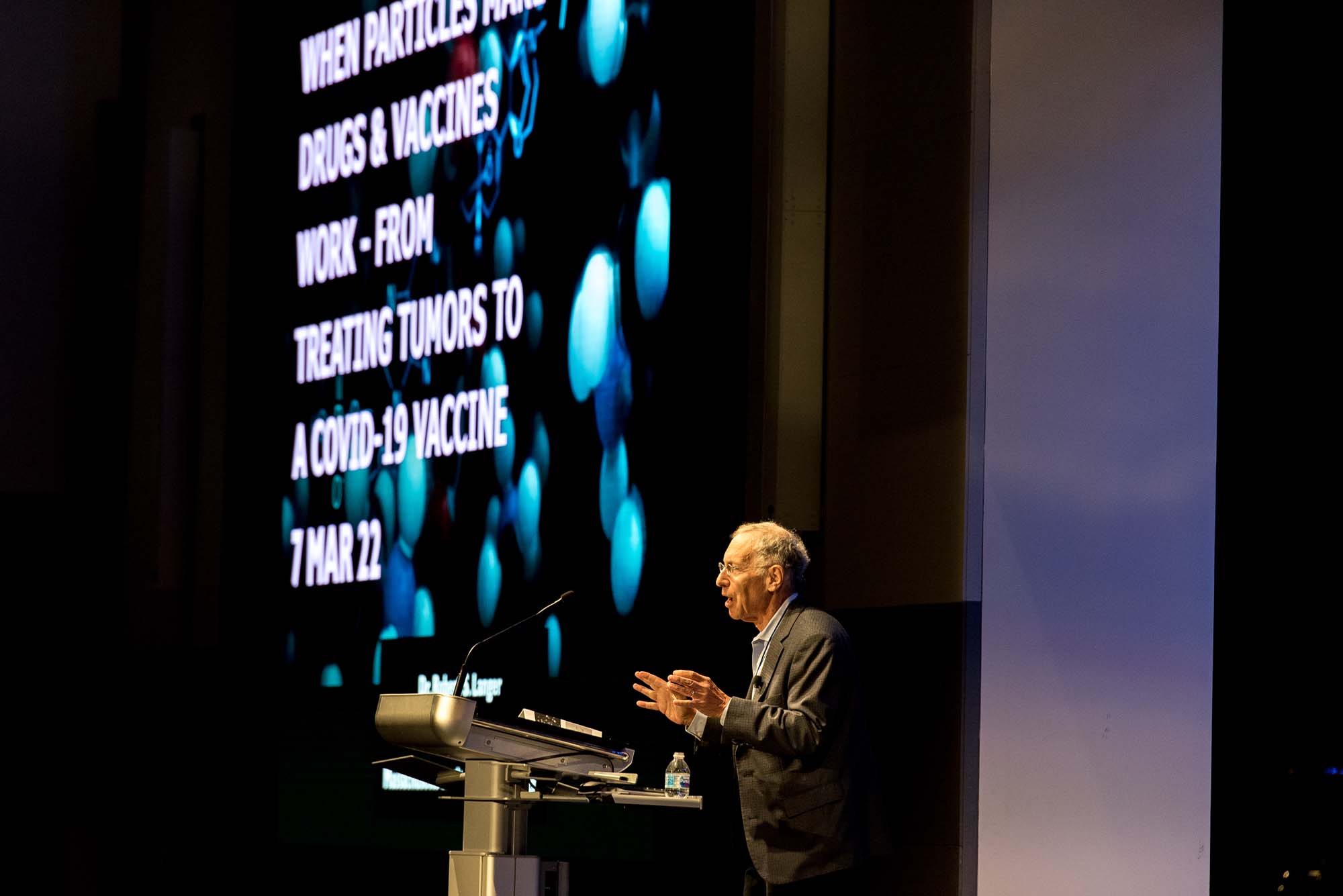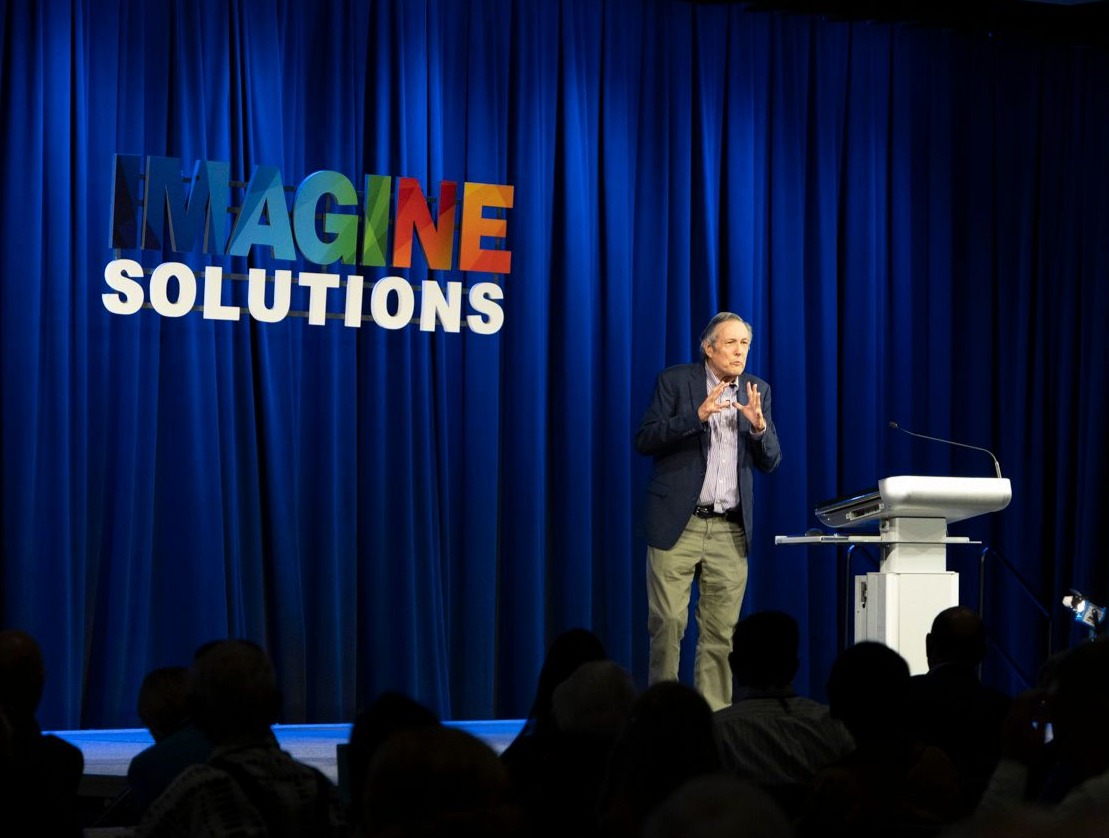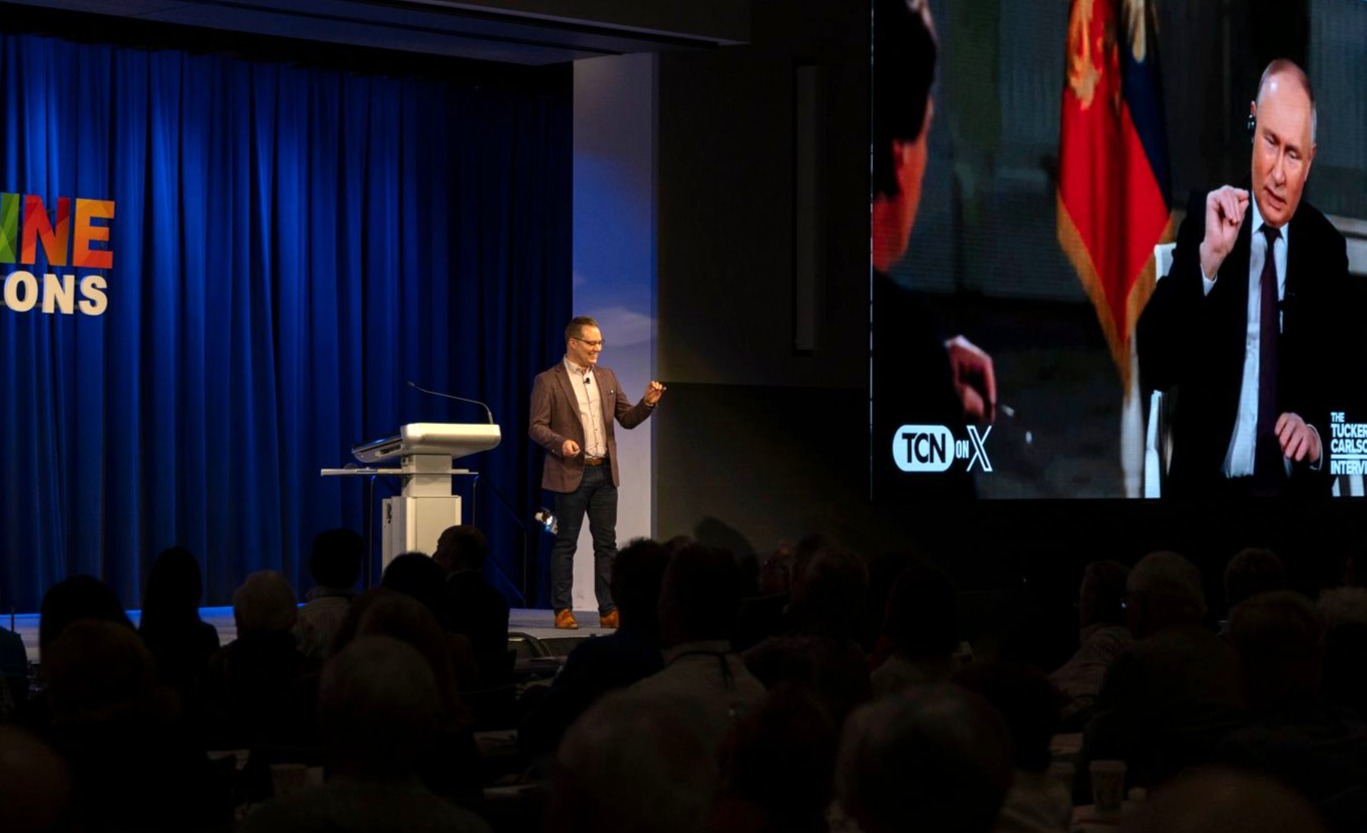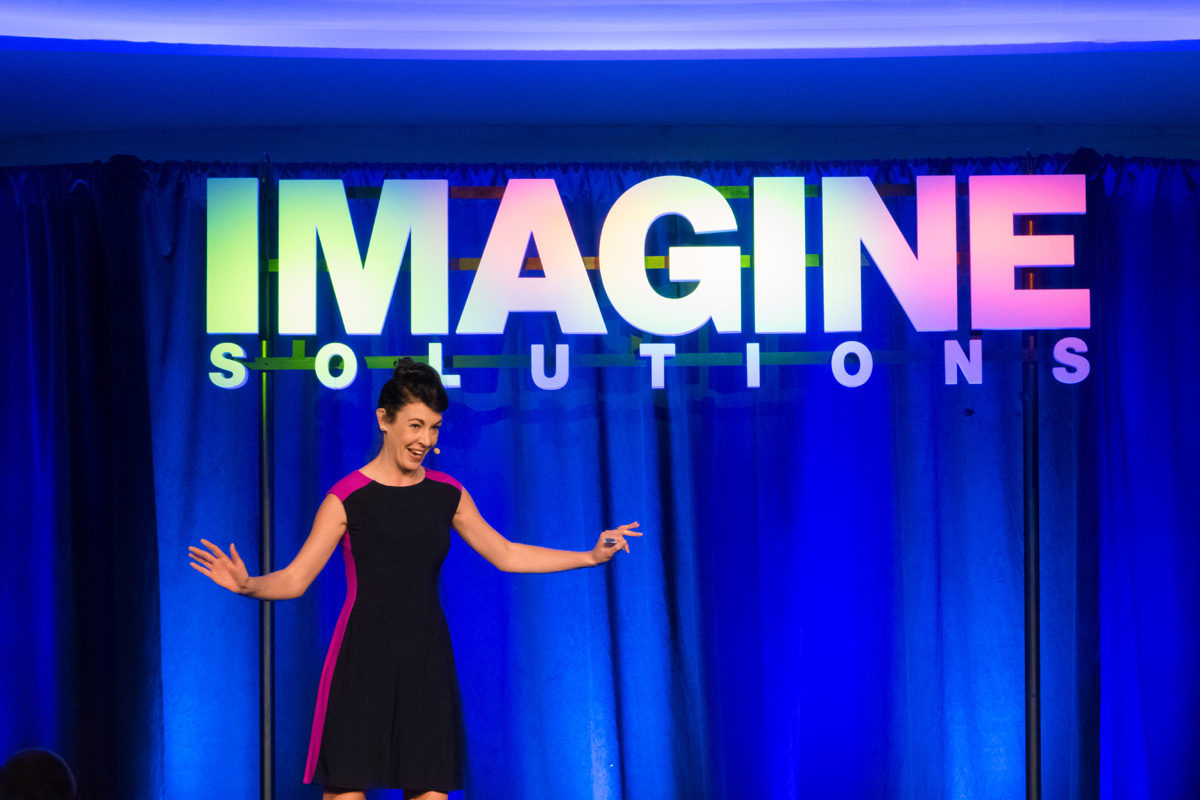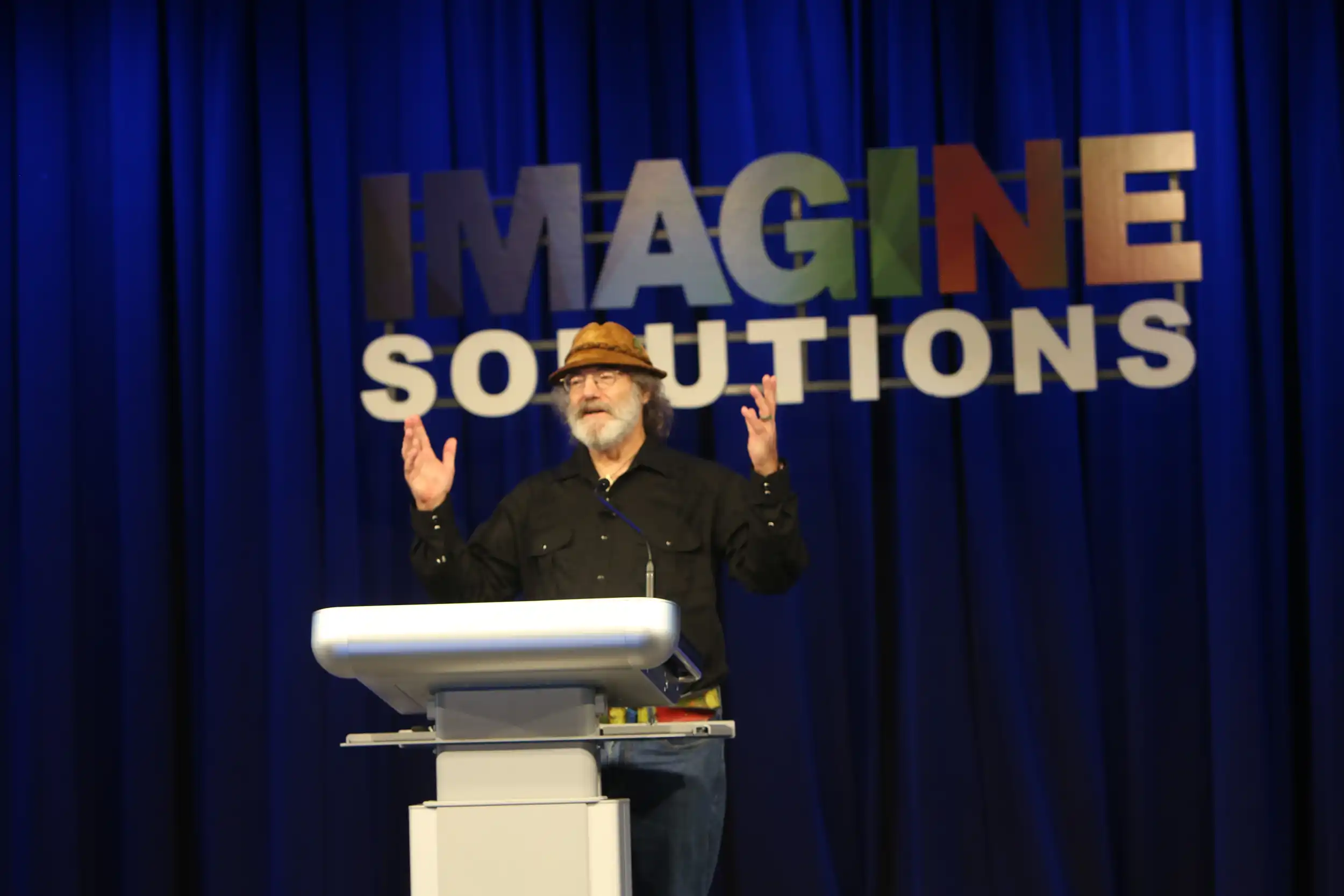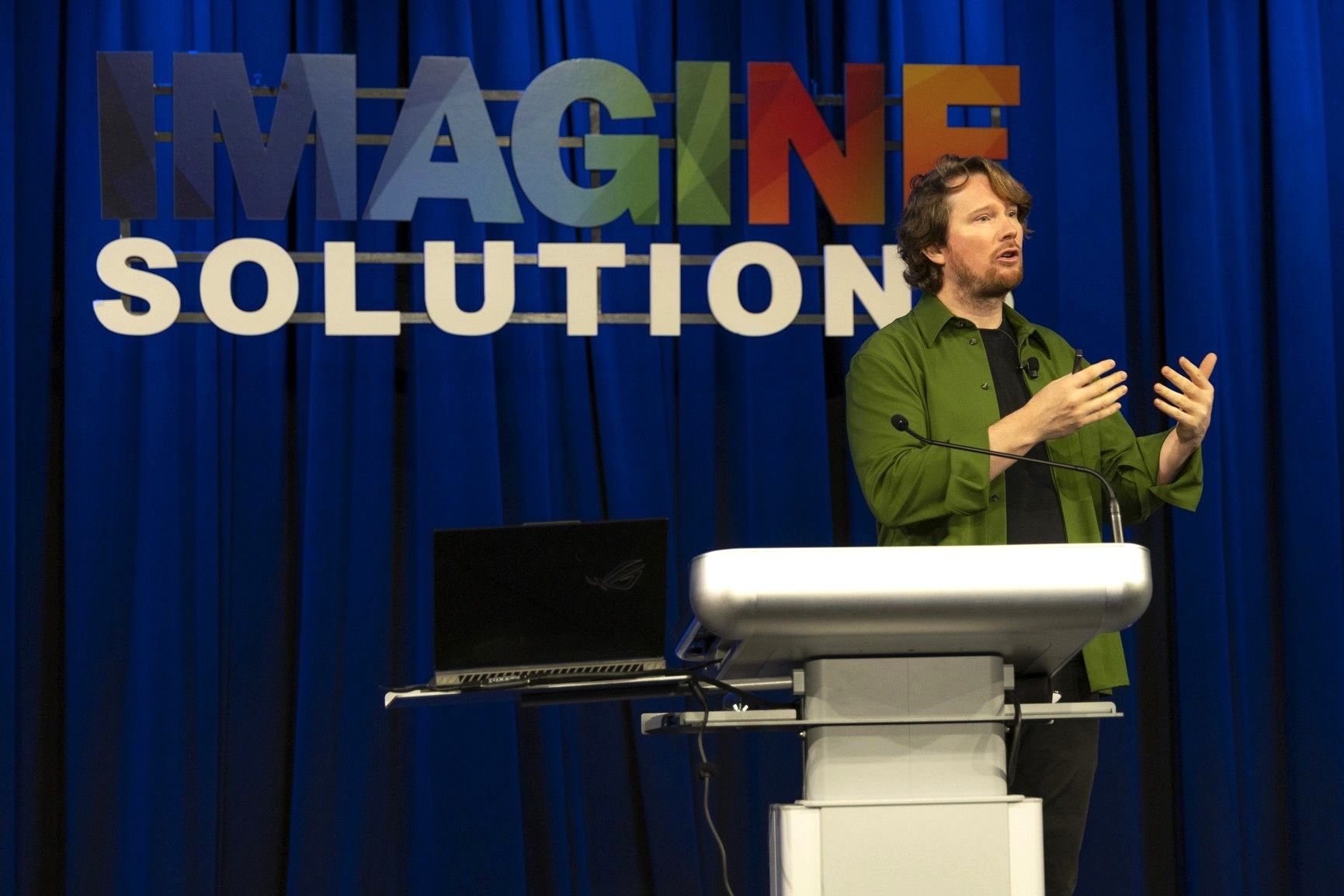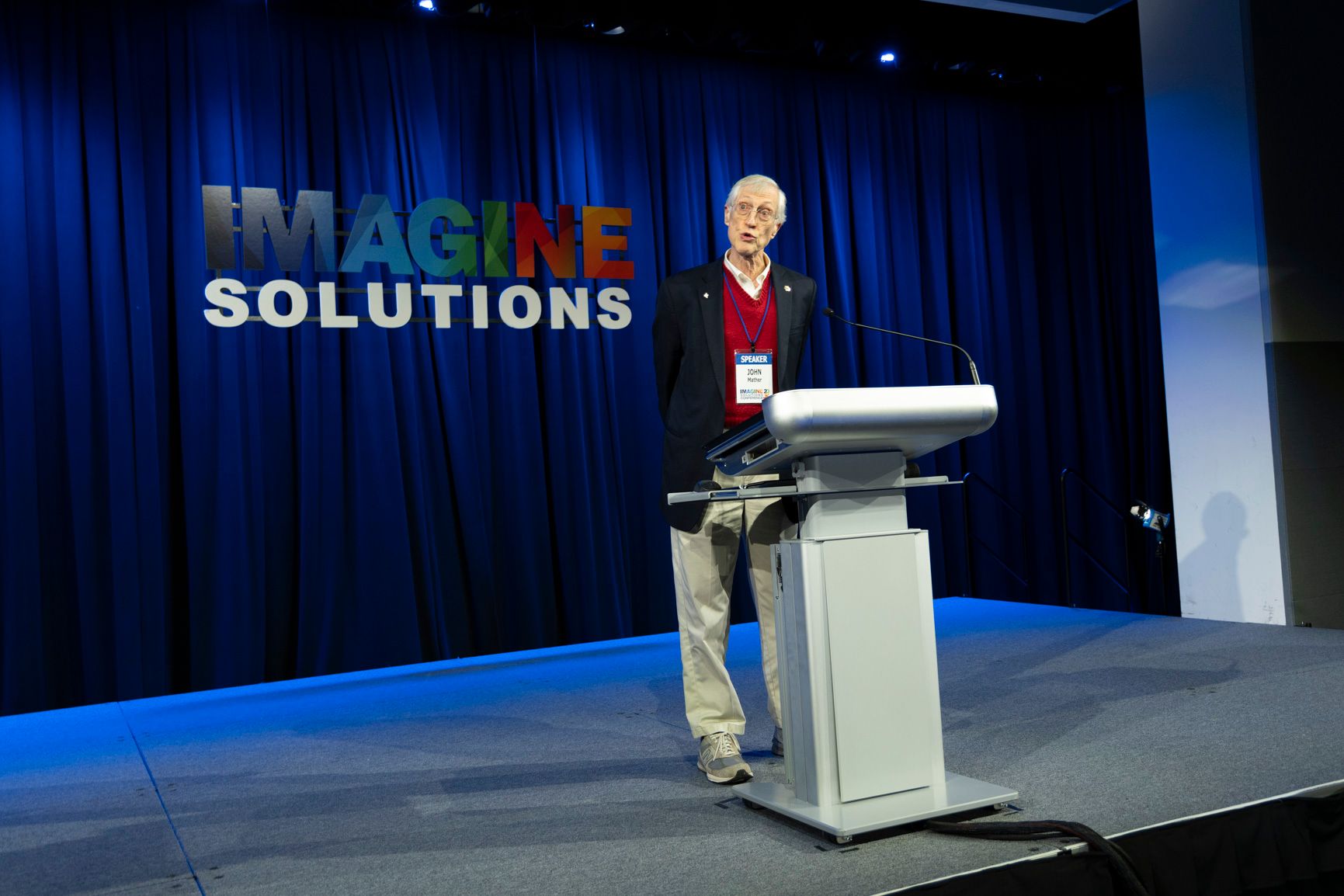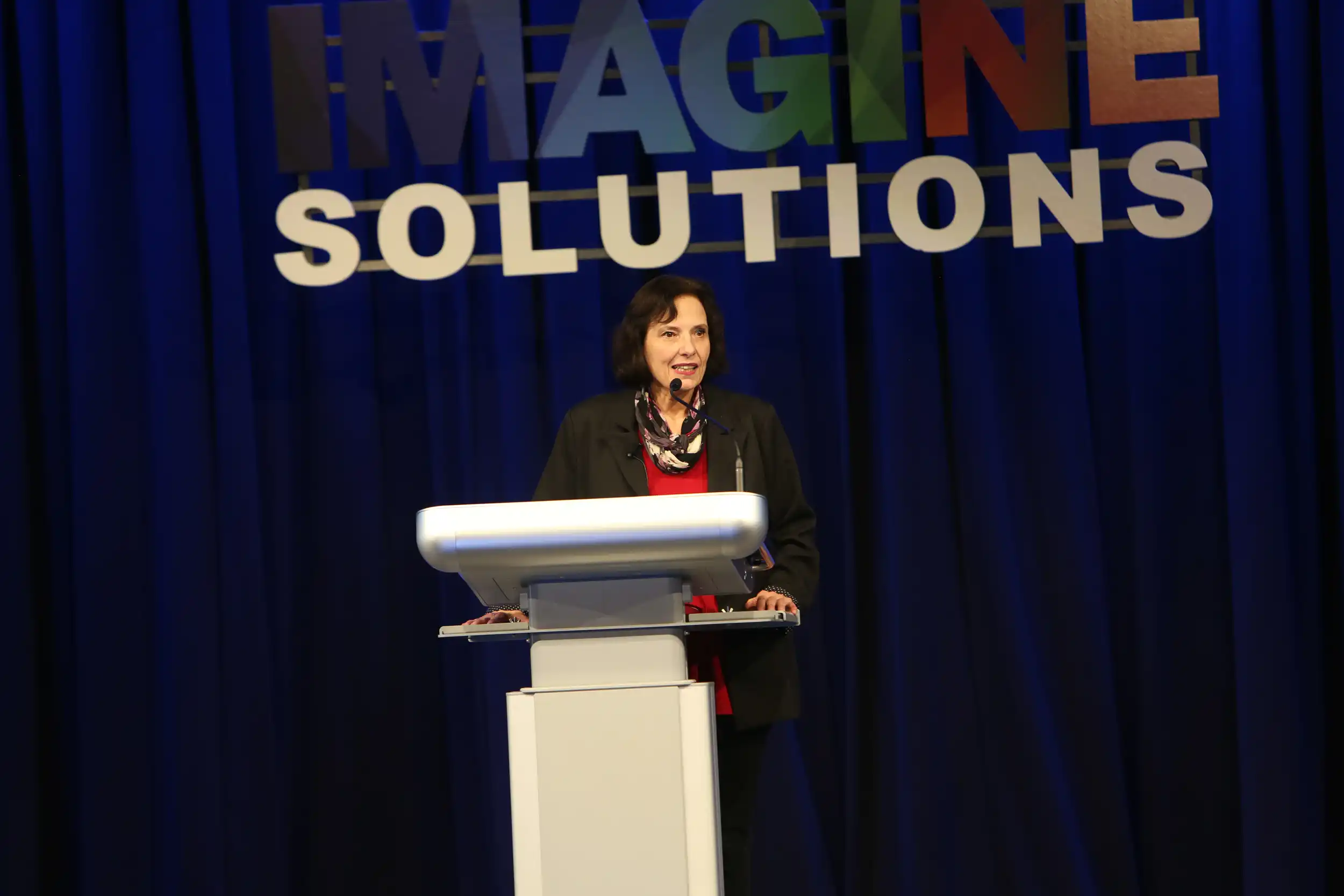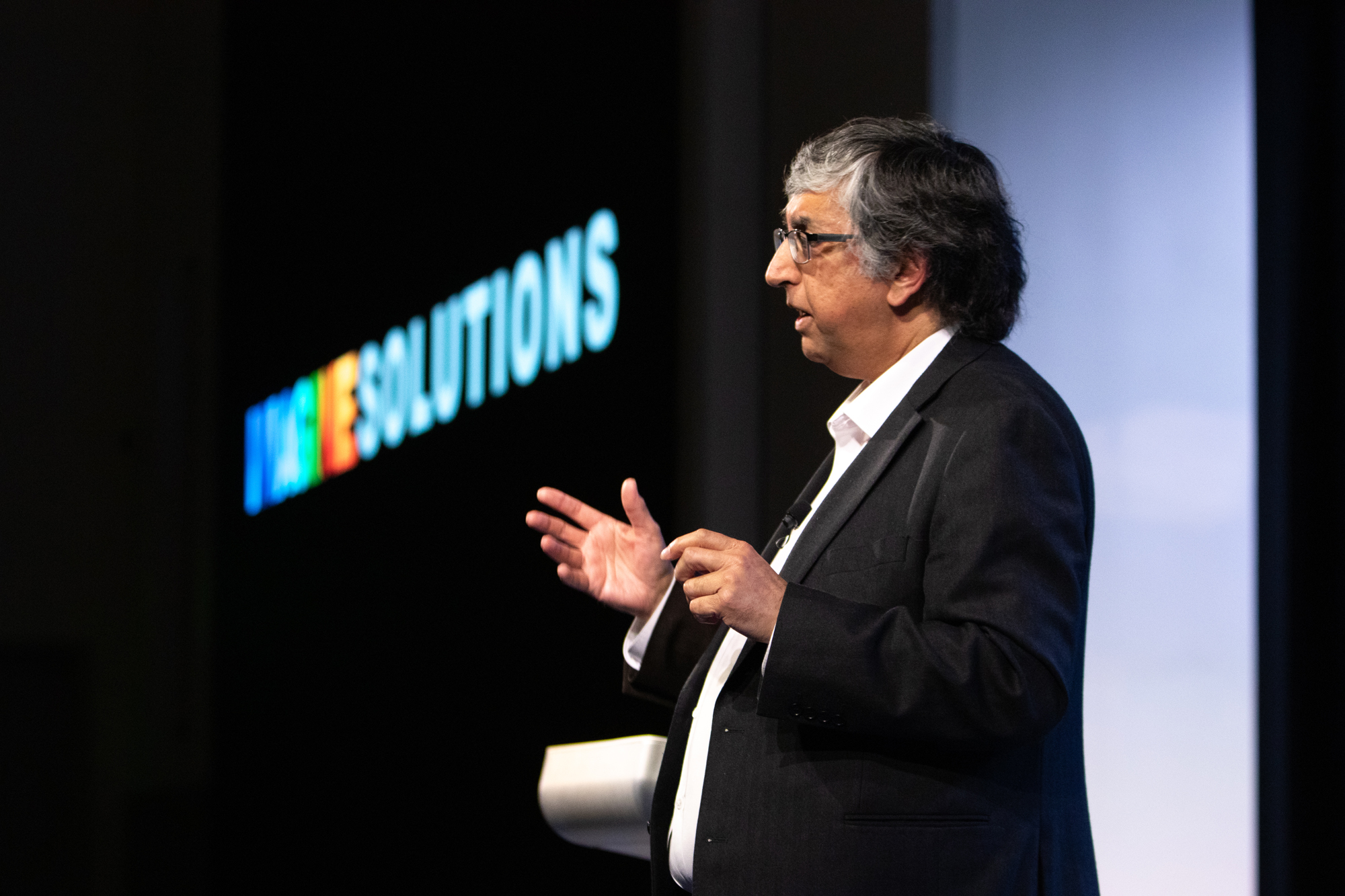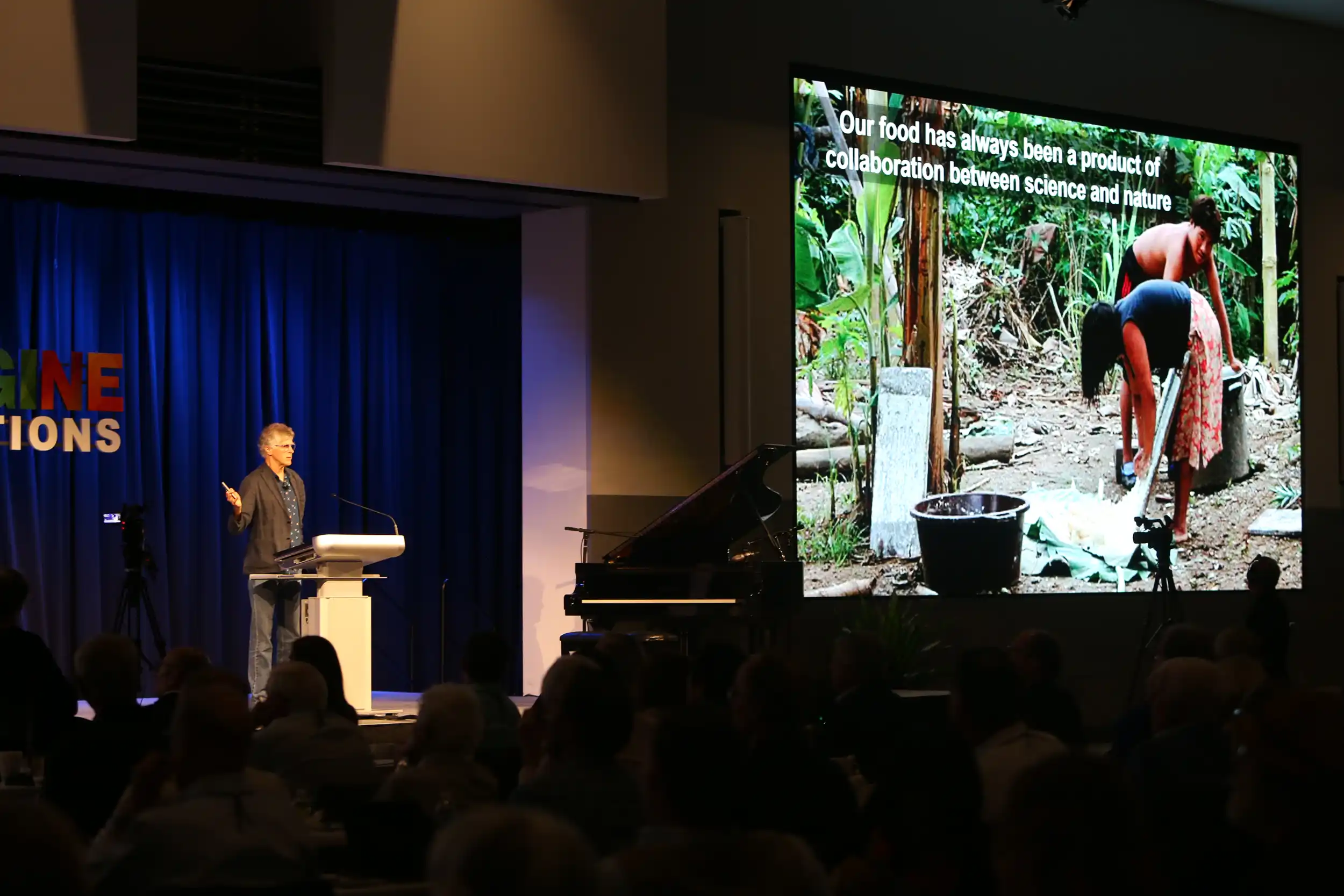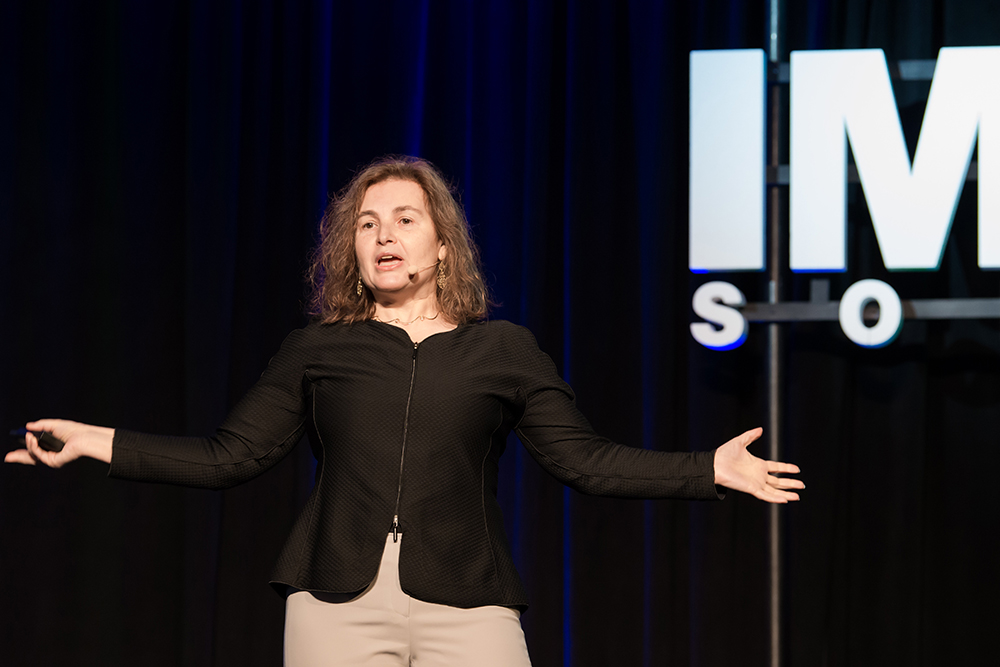Breakthroughs in Science & Technology
Robert Langer is the David H. Koch Institute Professor at MIT and is the co-founder of Moderna. He is America’s most-honored scientist, receiving more than 220 major awards. He holds more than 1,400 granted or pending patents and is one of the world’s most highly cited researchers with an h-index of 294 with currently over 353,000 citations.
00.26
[Applause] [Music] so [Music] mrna you've probably heard of it it was
01.00
the breakthrough in the world of medicine that led the solution to the covet pandemic moderna led the biomedical world in developing and getting ready to go to market and answer to the covet virus the fundamental building blocks of the vaccine in 42 days one of the great stories in the science of medicine robert langer is our most honored scientist he's institute professor at mit 1400 plus patents one of the world's most highly cited researchers dr langer's patents have been licensed or sub licensed to over 350 pharmaceutical chemical biotech and medical device companies he's participated in the founding of over 40 biotech companies including moderna as the scientific co-founder there today he is on modernist board and we're extraordinarily honored to welcome dr robert langer to bring alive this scientific breakthrough welcome dr robert langer
02.00
[Applause] thank you thank you so much [Music] thank thank you so much it's really a pleasure to be back here again after 10 years in person so i'd like to tell you i'll i will get to modern but i and but i wanted to tell you a little bit about just my own career as a scientist and how scientists and and an engineer and how you go through different things to get to the point where we actually got to the mrna vaccines and it's not a straightforward story by any means so with lots of ups and downs as i'll go over so i got my doctorate in 1974 and when i got done at mit at that year there was this gas shortage and what happened was is that all the oil companies would come to mit and offer lots of jobs and a very high paying ones and that's what pretty much almost all my friends
03.01
did as they go to oil companies so i thought i'd do what everybody else does i i applied to the oil companies i actually got 20 job offers four from exxon alone and i really i wasn't that good but you know they but they had so many uh openings so um but but when i go there you know i remember flying back to boston and thinking to myself you know they'd say well you could just you know make it you know make a lot of money by increasing the yield of one of these petrochemicals by 0.1 percent and i thought to myself i i didn't want to do that i didn't want to spend my life doing that started to think of other things that i might do with my uh career and um one of the things i thought about was education because when i was a graduate student at mit when i was supposed to be doing my thesis i helped start this school for poor high school kids in cambridge and i got very involved in developing new chemistry and math curricula and one day i saw an ad at city college of new york to do just that so i wrote them a letter applying for a job but they didn't write me back but i
04.00
really liked that idea i found all the ads i could to do something like that found about 40 and i wrote to all these colleges and none of them wrote me back so that wasn't going so well so i started to think well what other way could i use my science and engineering education to help people and i thought about medicine so i wrote to a lot of hospitals and medical schools they didn't write me back either and then one day one of the people in my lab said bob you know there's a surgeon in boston named judah folkman he said sometimes he hires unusual people he thought very highly of dr folkman i won't say what he thought about me but at any rate this this is a picture of dr folkman's idea he of how tumors grew which was actually quite controversial but basically if you go to the bottom of the screen you see a tiny tumor it's a picture and then it grows as a three-dimensional mass and if you go to the lower middle of the screen you you see maybe it's a million cells and actually it runs into
05.00
a nutrition problem it wouldn't get larger than that uh because it can't get nutrients or get rid of waste but the tumor is very clever his theory was that it secreted a chemical signal which he called taf tumor angiogenesis factor and that would cause blood vessels to grow to the tumor and that would solve the nutrition problem for the tumor so if you look at the rest of that picture going up the screen you see now it's got blood vessels the tumor gets bigger and bigger because it gets all the nutrition from there and and and then if you go to the top of the screen you see it's very vascularized and of course the tumor can spread through those blood vessels that's a process called metastasis which often kills people his theory was that if you could stop blood vessels anti-angiogenesis maybe that would be a whole new way to stop cancer well so at any rate to try to solve this problem one of the things that's key is to develop a bio essay a way to study it and like an animal or a chick egg or something like that there wasn't any way to do that so that was actually one of
06.00
my jobs uh other than isolating the inhibitor but we have the assay first so what we did we actually used the eye eyes and we put certain types of tumors in but we needed a tiny delivery system could be a polymer or lipid that could take any of these molecules we were trying to discover and they were big molecules large molecules that could deliver it for a period of time and dr falkland was on the board of the one company in the world a company called alza that had done any work in this area at all this was 1974. they had nobel prize winners and chemistry on their board and other things and he asked them could they help us but what they all told him was that it couldn't be possible that if you tried to take a large molecule like a protein or dna or rna it would just be too big to go through anything at a reasonable rate so they basically said it was impossible and literature actually and i'll get to that said that too but basically we really had no choice if we were going
07.00
to solve the angiogenesis problem we had to solve the delivery problem so i spent about two years working in the laboratory and i found over 200 different ways to get this to not work but eventually i was able to make little microspheres or nanospheres you see a picture of one here and one cut in half and what we showed next what we showed is that if you do this the right way we published in the journal nature that you could deliver different proteins and even nucleic acids this is the first time nucleic acids had ever been delivered through tiny particles for any period of time nonetheless i i remember even before we published this there was enormous skepticism about this in 1976 you know i was 27 years old i got asked for the first time in my life to give a lecture and it was to a group of very distinguished chemists and chemical engineers and i remember practicing this talk for weeks and when i got done i thought i did okay because i didn't forget too much what i was going to say or sam or too much so i thought when i
08.01
was done all these older scientists being nice people would want to encourage me this young guy but when i got off done i i i stepped off the podium and a whole bunch of them came up to me and they said we don't believe anything you just said they they said that again what the alza people said the molecules were too big and also we were using what are called organic solvents like ethanol or or methylene chloride and they said those would destroy any of these things and things actually went downhill from there for me if that were i i tried to apply to get grants you know from nih and other organizations my first nine were rejected uh really badly actually and and then uh you know i i actually love being a postdoc but a lot of my friends it's probably not good to do that forever uh so i started applying for faculty jobs in chemical engineering and no chemical engineering department in the world would hire me uh so i ended up getting a job in the nutrition department because the head of that department liked me and dr faulcon but he was kind of a benevolent dictator kind of a department head uh and he
09.02
didn't bother to ask anybody else in the department what they thought which which might have been okay except for one thing which is the year after i joined the department he left so so a lot of the senior faculty decided to give me advice and their advice is i should leave too um here's actually a direct quote from a friend of mine describing this many years later mike marletta is a chair professor at uc berkeley a member of the national academy of sciences which you heard about this morning and uh and here he's just saying describing 1980 one evening he went to a faculty dinner at a chinese restaurant with me and some senior mit professors he said a senior scientist said quizzing us while smoking a cigar he said when the older scientist heard my concepts for drug delivery he blew a cloud of smoke in my face and said you better start looking for another job and yeah so that wasn't so good but you know i just tried to keep my head down kept working and i believed in this so we did publish that paper in nature and
10.01
and other papers and we also use that technique to actually isolate the first blood vessel inhibitors this is kind of a graphic slide i won't keep it on too long but basically these are eyes with tumors and with a tiny little delivery system delivering either nothing which you see uh on on one slide where you see that sheet of blood vessels ultimately we sacrificed the animals before this but uh ultimately uh if you didn't uh the you the tumor would kill them uh also but if you go to the right where you see the plus cdi what you see is that now the vessels are sparser they're lower they avoid the tumor and actually 60 percent of the time these tumors never take off we publish this in the journal science which you also heard about this morning in 1976 nonetheless it took another 28 years from this paper before the first angiogenesis inhibitors were approved by fda it takes a lot of money a lot of time and and and people would use a lot
11.00
of the principles we've developed but if it were not for companies like genotech and others uh we wouldn't have angiogenesis inhibitors and this hard slide may be a little hard to see i'm not sure but basically 28 years after that paper you see the first angiogenesis inhibitor of aston approved by fda today there are many uh approved not only for all kinds of cancer avastin by the way is the number two or three best-selling biotech drug in history but you see them not only approved for um for for cancer but also eye diseases these are drugs like lucentis and ilea that are widely used for treating macular degeneration um one of the things that dr folkman once said to me he said bob we should file a patent children's hospital at the time never had a patent and so we filed for one but then five years in a row the patent examiner rejected it and then all the people at the hospital told me i was wasting a lot of money for the hospital so they said i should give up but but i don't don't like to give up you can probably tell that by now so at
12.01
any rate i started to think but science wasn't working you know we had to convince the patent examiner and science wasn't really working but as i told you in the beginning when we first started doing this everybody told me it was impossible it could never work i wondered did any could anybody have ever written that down so you can do what's called a science citation search looking back at your 76 nature paper i did this in 1982 after years of rejection to see what people wrote and what one of the papers i found was really good i had no idea was even written but here five of the top material scientists in the world are saying about this field generally the agent to be released is a relatively small molecule with a molecular weight no larger than a few hundred one would not expect that macromolecules for example proteins could be released by such a technique because of their extremely small permeation rates however folkman and myself have showed some surprising results that clearly demonstrate the opposite so we showed that to the examiner and he said well that's interesting he said i'll allow the patent if dr lanker can get written
13.00
affidavits from these five people that they really wrote it so it's true story so i wrote them and they wrote back that they really wrote it we got this really broad patent and with that patent we i got involved in starting companies i've learned that if you're not your own champion nobody else will be so i got involved in patenting things getting my and my students were very interested in seeing what their work make a difference and and what that's led to by a number of different companies some of which we started and others which we've taught how to do this are many products that are used i won't go through all of these by any means but some of the leading methods today for treating opioid addiction are based on this if you go to the bottom right you see drug eluding stents which is probably one of the major treatments for heart disease there's also ways of treating cancer pain type 2 diabetes and so forth now a lot of these systems that we developed are injected or implanted but sometimes you want to even inject things into the bloodstream or make them really super tiny but when you do that a lot of
14.00
times they stick together and there's also foreign cells they're called macrophages and others and they eat things so you'll never get to your target let's say cancer if that's what you're trying to do so what we did is we made a special coating actually of an fda approved molecule it absorbs a lot of water so you get kind of a disguise and we found that when you do that then these systems can last a lot longer i'll show you a video that the tv show nova did film well they actually made this based on our work he starts with a nanoparticle of anti-cancer drugs that gets encased in a plastic that releases the drug over time that in turn gets a special wrapping that disguises the package as a water molecule to fool the body's immune system and last but not least the address where it should be delivered a key that will only fit the lock of cancer cells
15.00
i should say that a lot of the clinicians i work with tell me it doesn't blow the cell up quite like that but at any rate um so but but that really opens the door to delivering genetic molecules that seem to us like s-i-r-n-a and i got on i was on the founding scientific advisory board of a company called dell nylem and al-nilam actually we used this to to actually treat a rare disease that the fda approved attr amyloidosis and then in 2010 four of us derek rossi ken chen uh and nubar feyen uh got together and decided well you know proteins they're great therapies uh but it takes a long time to make a protein therapy you know maybe a year or more with it's very and there's a lot of things you can't treat that way but there's a central dogma of molecular biology dna makes rna makes proteins what if you could take rna for example put it in a nanoparticle which you need to do otherwise it would get destroyed too and then it could make the protein
16.01
and you could do this a heck of a lot faster because rather than have giant factories now you just inject this into the body uh the rna will get destroyed reasonably quickly i mean it certainly doesn't last but it's there long enough to make a lot of protein to make a vaccine or or or different things so so that was our idea uh not only could you use it to make proteins and make proteins much more rapidly um but you could also treat diseases you maybe never treated before diseases that were that are based on the inside of a cell or a cell membrane so we started moderna in 2010 and i'm going to go through this kind of quickly but just to show you where moderna is there's all kinds of new therapies that are in clinical trials some of them are for the covert vaccine some for flu vaccines there's even cancer vaccines that that are being worked on um various kinds of rare diseases aids vaccines
17.01
lung diseases like cystic fibrosis enzyme deficiency diseases there's something like 23 programs right now that moderna has in clinical trials but i expect the one that you're most interested in might be the covert one so i thought i'd tell you a little bit about that and a lot of times people think you know it just came out of thin air in the year 2020. but moderna and the scientists there have been great uh some of whom are my own students they spent 10 years working on the underlying technology so when covid came about this was the timeline that uh has been mentioned the chinese scientists published the virus genetic sequence but you can just do a simple back calculation if you know the genetic sequence you can figure out the of what's called the spike protein you can back calculate what type of rna you need to do that you can then put it in the nanoparticles which we developed shipped it to the vaccine the nih for testing and the first doses were in people's arms uh you know about two months later
18.02
in in seattle now i should point out that just like i got to experience a lot of skepticism when i started my early work moderna faced the same thing you know and and i'll just show you a personal example uh when we did the first clinical trial uh the boston globe our local newspaper uh interviewed a number of scientists about what they thought this is in may 2020. and here's their headline on the front page they some of the people they interviewed said well this isn't how you do science and then they showed my picture without my glasses but uh at any rate um and and you know that's kind of discouraging but and modern has been criticized by other places over the years people early on some of the newspapers would come and stock analysts compared it to theranos you know i always felt that was unfair but you know i've lived long enough so that i've seen it before and you know everybody kept trying and trying and what you see of course is now that vaccine has been used all over the world this is the fda approved vaccine and i
19.01
thought i'd just show you a little bit of data um this is uh on hospitalizations this is from um cdc and you can see the enormous difference between unvaccinated this is on hospitalizations uh vaccinated with no booster and with a booster also if you look at mayo clinic data all this i put together pretty recently you get to look at the effectiveness this is not getting uh any symptoms at all and and people may not always realize what it means what 94 is so i thought i would tell you what that is if you had like say took 100 000 people and gave them uh and gave them no vaccine and then let's compare that to 100 000 people that got a vaccine so let's say a thousand of those without the vaccine got coveted symptoms and let's say 60 with the vaccine got coveted symptoms that's 94 percent uh so at is that that's what moderna got pfizer's 91 johnson johnson is 66 it's been removed
20.01
from the market because of safety issues uh and uh just last week glaxo uh and and uh sanofi reported 57 that's just getting symptoms period but then hospitalizations what was amazing is when we broke the the data on the clinical trial uh almost uh nobody went to the hospital out of 15 000 people just to show you a little bit more data on effectiveness this is from the new england journal of medicine about 400 000 people you can see again that it's incredibly effective very low percentage and and more effective than than the pfizer vaccine and if you look at another one this is u.s veterans again you see a very very low incidence of hospitalizations so so this is some about moderna but you know going back to our mit lab we want to solve additional problems and a number of years ago back way before just about when i did start moderna totally separately we heard about
21.00
philanthropy before so this computer scientist a software expert who is a philanthropist came to see me one day because he was very interested he actually predicted we might see these problems someday so here's a picture of that philanthropist and me in my office and one of the things that he wondered about and i wondered i've been thinking about this anyhow is could you probably know that you have to get boosters all the time or at least a second shot now that's one thing to get in the united states but in the developing world like africa people don't go back for the second injection or third injection i mean you know there's one of the big problems is getting the first injection so one of the things that we started talking about could we ever come up with self-boosting vaccines and anna jacqueline and others and kevin mchugh and others in our lab we came up with a way to do that it's a new printing process where you can control the thickness and composition of little particles let me just show you another video the stamped assembly of polymer layers or seal method combines
22.01
computer chip manufacturing technology with a novel layer by layer assembling method to create an array of core shell polymer particles first the polymer of choice plga in this example is melt pressed using a prefabricated silicone mold the mold with the particles is then transferred to another substrate where it is peeled off leaving behind an array of polymer based particles these are then filled with any drug or vaccine using an inkjet piezoelectric nozzle and then dried to seal the filled particles a cap mold is aligned sealed with the base and delaminated the resulting array of core shell particles are then removed from the base and stored until use also i should point out like henry was saying this morning one of the things we did is we made this out of something materials that will degrade to water and carbon dioxide so they're ultimately totally degradable and you can make them in any shape or size we actually published this and
23.01
patented it bill's actually one of the inventors and but what's really exciting is you do get these self-boost fat boosting vaccines you can give one injection and here you see like 11 boosts over different times you could change the timing by the composition of the material and by its thickness and what we're doing now again with the sponsorship of the foundation this is my last slide is to actually create little um and we're doing this with mark prousmas of georgia tech who is one of my former students is we're making what i call little micro needle patches if you look on the left hand side you see a patch it's like a band-aid uh and you could store these vaccines uh hopefully in in those patches and ship them all over the world i mean we're also working on improving the stability but that's where we hope this will go someday uh you know where you could do this so in conclusion what i've tried to show you is sort of a very circuitous journey for me um but it's sort of one person's example of of how you can try to use science
24.00
to help relieve suffering and prolong life so thank you very much for having me and a pleasure to speak to you [Applause] you

